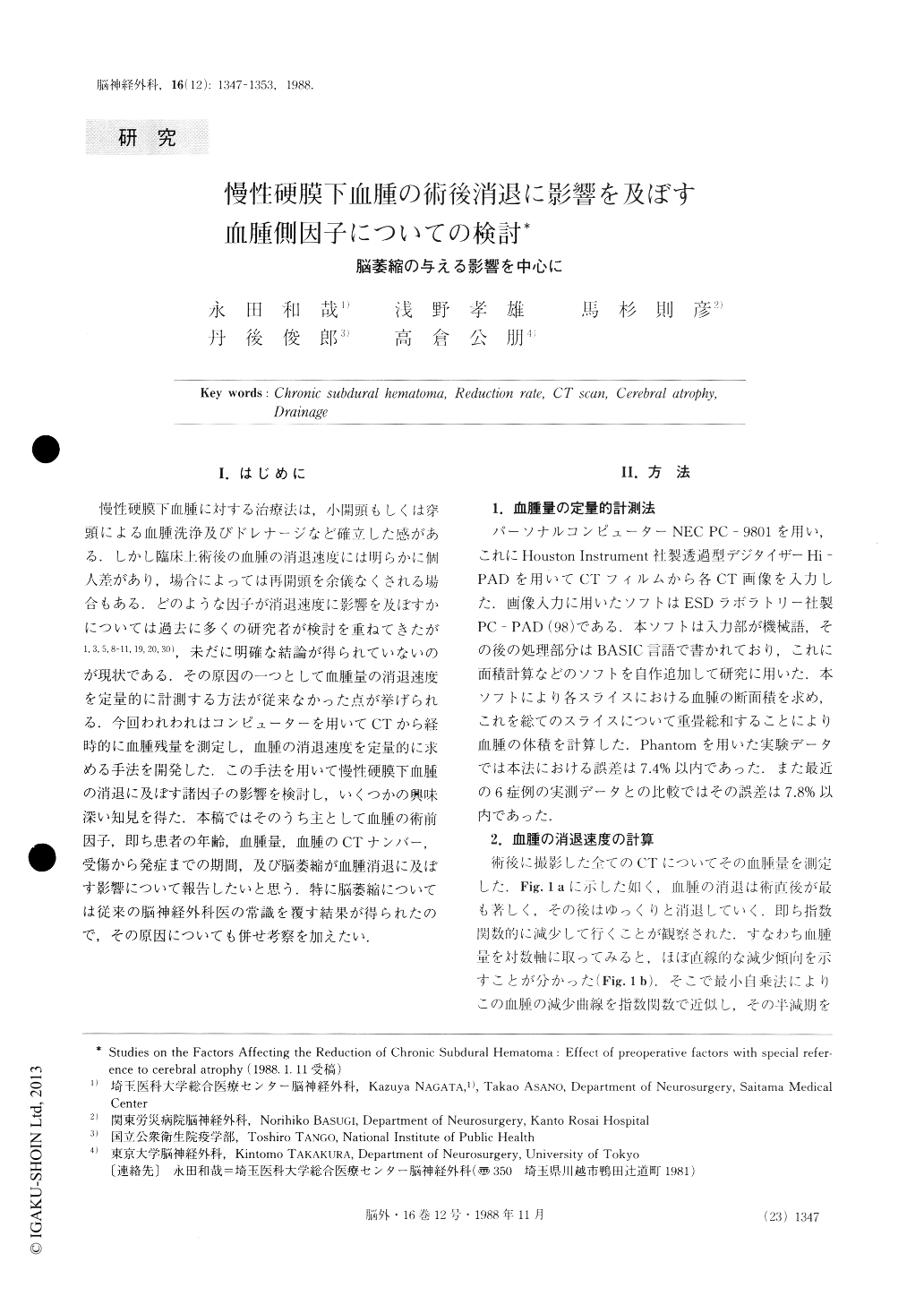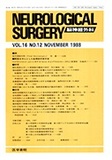Japanese
English
- 有料閲覧
- Abstract 文献概要
- 1ページ目 Look Inside
I.はじめに
慢性硬膜下血腫に対する治療法は,小開頭もしくは穿頭による血腫洗浄及びドレナージなど確立した感がある.しかし臨床上術後の血腫の消退速度には明らかに個人差があり,場合によっては再開頭を余儀なくされる場合もある.どのような因子が消退速度に影響を及ぼすかについては過去に多くの研究者が検討を重ねてきたが1,3,5,8-11,19,20,30),未だに明確な結論が得られていないのが現状である.その原因の一つとして血腫量の消退速度を定量的に計測する方法が従来なかった点が挙げられる.今回われわれはコンピューターを用いてCTから経時的に血腫残量を測定し,血腫の消退速度を定量的に求める手法を開発した.この手法を用いて慢性硬膜下血腫の消退に及ぼす諸因子の影響を検討し,いくつかの興味深い知見を得た.本稿ではそのうち主として血腫の術前因子,即ち患者の年齢,血腫量,血腫のCTナンバー,受傷から発症までの期間,及び脳萎縮が血腫消退に及ぼす影響について報告したいと思う.特に脳萎縮については従来の脳神経外科医の常識を覆す結果が得られたので,その原因についても併せ考察を加えたい.
The authors examined the preoperative factors affecting the reduction of chronic subdural hematoma (CSDH) . A new method was developed to calculate the reduction rate of CSDH using CT volumetry tech-nique. Postoperative serial CT films were examined and each hematoma volume was calculated by microcompu-ter. A postoperative exponential decrease of hematoma volume was observed, and the log-transformation of the hematoma volume turned the curve to a linear de-crease. The least square method was used to fit an ex-ponential curve, and the half reduction date (HRD) was calculated from the fitting curve.

Copyright © 1988, Igaku-Shoin Ltd. All rights reserved.


